THE THEORY OF OPEN QUANTUM SYSTEMS
Half-title
Title Page
Copyright Page
Dedication
Preface
Bibliography
Acknowledgements
Contents
Part I: Probability in classical and quantum physics
Chapter 1. Classical probability theory and stochastic processes
1.1 The probability space
1.1.1 The σ-algebra of events
1.1.2 Probability measures and Kolmogorov axioms
1.1.3 Conditional probabilities and independence
1.2 Random variables
1.2.1 Definition of random variables
1.2.2 Transformation of random variables
1.2.3 Expectation values and characteristic function
1.3 Stochastic processes
1.3.1 Formal definition of a stochastic process
1.3.2 The hierarchy of joint probability distributions
1.4 Markov processes
1.4.1 The Chapman–Kolmogorov equation
1.4.2 Differential Chapman–Kolmogorov equation
1.4.3 Deterministic processes and Liouville equation
1.4.4 Jump processes and the master equation
1.4.4.1 Differential Chapman–Kolmogorov equation
1.4.4.2 The homogeneous and the non-homogeneous Poisson process
1.4.4.3 Increments of the Poisson process
1.4.5 Diffusion processes and Fokker–Planck equation
1.5 Piecewise deterministic processes
1.5.1. The Liouville master equation
1.5.2 Waiting time distribution and sample paths
1.5.3 Path integral representation of PDPs
1.5.4 Stochastic calculus for PDPs
1.5.4.1 Itô calculus for diffusion processes
1.5.4.2 Itô calculus for PDPs
1.6 Lévy processes
1.6.1 Translation invariant processes
1.6.2 The Lévy–Khintchine formula
1.6.3 Stable Lévy processes
1.6.3.1 Stable distributions and scaling relations
1.6.3.2 Characteristic exponents of stable Lévy processes
References
Chapter 2. Quantum probability
2.1 The statistical interpretation of quantum mechanics
2.1.1 Self-adjoint operators and the spectral theorem
2.1.2 Observables and random variables
2.1.3 Pure states and statistical mixtures
2.1.3.1 The statistical formulae of quantum mechanics
2.1.3.2 Properties of the density matrix
2.1.3.3 The non-existence of dispersion-free ensembles
2.1.4 Joint probabilities in quantum mechanics
2.2 Composite quantum systems
2.2.1 Tensor product
2.2.2 Schmidt decomposition and entanglement
2.3 Quantum entropies
2.3.1 Von Neumann entropy
2.3.2 Relative entropy
2.3.3 Linear entropy
2.4 The theory of quantum measurement
2.4.1 Ideal quantum measurements
2.4.2 Operations and effects
2.4.3 Representation theorem for quantum operations
2.4.4 Quantum measurement and entropy
2.4.5 Approximate measurements
2.4.6 Indirect quantum measurements
2.4.7 Quantum non-demolition measurements
References
Part II: Density matrix theory
Chapter 3. Quantum master equations
3.1 Closed and open quantum systems
3.1.1 The Liouville–von Neumann equation
3.1.2 Heisenberg and interaction picture
3.1.3 Dynamics of open systems
3.2 Quantum Markov processes
3.2.1 Quantum dynamical semigroups
3.2.2 The Markovian quantum master equation
3.2.3 The adjoint quantum master equation
3.2.4 Multi-time correlation functions
3.2.5 Irreversibility and entropy production
3.3 Microscopic derivations
3.3.1 Weak coupling Limit
3.3.2 Relaxation to equilibrium
3.3.3 Singular-coupling limit
3.3.4 Low-density limit
3.4 The quantum optical master equation
3.4.1 Matter in quantized radiation fields
3.4.1.1 Performing the Born–Markov approximation
3.4.1.2 Thermal reservoir
3.4.2 Decay of a two-level system
3.4.3 Decay into a squeezed field vacuum
3.4.4 More general reservoirs
3.4.5 Resonance fluorescence
3.4.5.1 Equation of motion for the Bloch vector
3.4.5.2 Spectrum of resonance fluorescence
3.4.6 The damped harmonic oscillator
3.4.6.1 Pauli master equation and stationary solution
3.4.6.2 Adjoint master equation
3.4.6.3 Coherent state representation
3.5 Non-selective, continuous measurements
3.5.1 The quantum Zeno effect
3.5.2 Density matrix equation
3.6 Quantum Brownian motion
3.6.1 The Caldeira–Leggett model
3.6.2 High-temperature master equation
3.6.2.1 Derivation of the master equation
3.6.2.2 Approximate stationary solution
3.6.2.3 Equations of motion for mean values and variances
3.6.3 The exact Heisenberg equations of motion
3.6.3.1 Derivation of the Heisenberg equations
3.6.3.2 Quadratic potentials
3.6.3.3 Free Brownian motion
3.6.3.4 Response function, equilibrium correlation function and the fluctuation dissipation theorem
3.6.4 The influence functional
3.6.4.1 The influence super-operator
3.6.4.2 Path integral representation
3.6.4.3 Classical equation of motion
3.6.4.4 Determining the path integral for harmonic potentials
3.6.4.5 Solution of the Caldeira–Leggett master equation
3.7 Non-linear quantum master equations
3.7.1 Quantum Boltzmann equation
3.7.2 Mean field master equations
3.7.3 Mean field laser equations
3.7.4 Non-linear Schrödinger equation
3.7.5 Super-radiance
References
Chapter 4. Decoherence
4.1 The decoherence function
4.2 An exactly solvable model
4.2.1 Time evolution of the total system
4.2.2 Decay of coherences and the decoherence factor
4.2.3 Coherent subspaces and system-size dependence
4.3 Markovian mechanisms of decoherence
4.3.1 The decoherence rate
4.3.2 Quantum Brownian motion
4.3.3 Internal degrees of freedom
4.3.4 Scattering of particles
4.4 The damped harmonic oscillator
4.4.1 Vacuum decoherence
4.4.2 Thermal noise
4.5 Electromagnetic field states
4.5.1 Atoms interacting with a cavity field mode
4.5.2 Schrödinger cat states
4.5.2.1 Initial state of A1 and interaction in R1
4.5.2.2 Atom field interaction in C
4.5.2.3 Interaction in R2 and measurement on A 1
4.5.2.4 Field damping in C
4.5.2.5 Initial state of A2 and interaction in R1 Atom
4.5.2.6 Atom field interaction in C
4.5.2.7 Interaction in R2 and measurement on A2
4.6 Caldeira–Leggett model
4.6.1 General decoherence formula
4.6.2 Ohmic environments
4.6.2.1 High-temperature limit
4.6.2.2 Harmonic oscillator
4.7 Decoherence and quantum measurement
4.7.1 Dynamical selection of a pointer basis
4.7.2 Dynamical model for a quantum measurement
References
Part III: Stochastic processes in Hilbert space
Chapter 5. Probability distributions on Hilbert space
5.1 The state vector as a random variable in Hilbert space
5.1.1 A new type of quantum mechanical ensemble
5.1.2 Stern–Gerlach experiment
5.2 Probability density functionals on Hilbert space
5.2.1 Probability measures on Hilbert space
5.2.2 Distributions on projective Hilbert space
5.2.3 Expectation values
5.3 Ensembles of mixtures
5.3.1 Probability density functionals on state space
5.3.2 Description of selective quantum measurements
References
Chapter 6. Stochastic dynamics in Hilbert space
6.1 Dynamical semigroups and PDPs in Hilbert space
6.1.1 Reduced system dynamics as a PDP
6.1.1.1 Closed systems
6.1.1.2 Unravelling the quantum master equation
6.1.1.3 The Liouville master equation
6.1.1.4 Deterministic evolution
6.1.1.5 Jump process and waiting time distribution
6.1.1.6 Stochastic differential equation
6.1.1.7 Quantum master equation
6.1.2 The Hilbert space path integral
6.1.3 Diffusion approximation
6.1.4 Multi-time correlation functions
6.1.4.1 Reduced Heisenberg picture operators
6.1.4.2 Multi-time correlations
6.2 Stochastic representation of continuous measurements
6.2.1 Stochastic time evolution of Ep-ensembles
6.2.2 Short-time behaviour of the propagator
6.3 Direct photodetection
6.3.1 Derivation of the PDP
6.3.2 Path integral solution
6.4 Homodyne photo detection
6.4.1 Derivation of the PDP for homodyne detection
6.4.2 Stochastic Schrödinger equation
6.5 Heterodyne photodetection
6.5.1 Stochastic Schrödinger equation
6.5.2 Stochastic collapse models
6.6 Stochastic density matrix equations
6.7 Photodetection on a field mode
6.7.1 The photocounting formula
6.7.1.1 Fock state
6.7.1.2 Coherent state
6.7.1.3 Schrödinger cat initial states
6.7.2 QND measurement of a field mode
References
Chapter 7. The stochastic simulation method
7.1 Numerical simulation algorithms for PDPs
7.1.1 Estimation of expectation values
7.1.2 Generation of realizations of the process
7.1.3 Determination of the waiting time
7.1.3.1 Exponential waiting time distributions
7.1.3.2 Multi-exponential waiting time distributions
7.1.3.3 General waiting time distributions
7.1.4 Selection of the jumps
7.2 Algorithms for stochastic Schrödinger equations
7.2.1 General remarks on convergence
7.2.2 The Euler scheme
7.2.3 The Heun scheme
7.2.4 The fourth-order Runge–Kutta scheme
7.2.5 A second-order weak scheme
7.3 Examples
7.3.1 The damped harmonic oscillator
7.3.1.1 Simulating the PDP
7.3.1.2 Simulating the SSE
7.3.2 The driven two-level system
7.4 A case study on numerical performance
7.4.1 Numerical efficiency and scaling laws
7.4.2 The damped driven Morse oscillator
7.4.2.1 Description of the model
7.4.2.2 Simulation results
References
Chapter 8. Applications to quantum optical systems
8.1 Continuous measurements in QED
8.1.1 Constructing the microscopic Hamiltonian
8.1.2 Determination of the QED operation
8.1.3 Stochastic dynamics of rnultipole radiation
8.1.4 Representation of incomplete measurements
8.2 Dark state resonances
8.2.1 Waiting time distribution and trapping state
8.2.2 Measurement schemes and stochastic evolution
8.3 Laser cooling and Lévy processes
8.3.1 Dynamics of the atomic wave function
8.3.2 Coherent population trapping
8.3.3 Waiting times and momentum distributions
8.4 Strong field interaction and the Floquet picture
8.4.1 Floquet theory
8.4.2 Stochastic dynamics in the Floquet picture
8.4.3 Spectral detection and the dressed atom
References
Part IV: Non-Markovian quantum processes
Chapter 9. Projection operator techniques
9.1 The Nakajima–Zwanzig projection operator technique
9.1.1 Projection operators
9.1.2 The Nakajima–Zwanzig equation
9.2 The time-convolutionless projection operator method
9.2.1 The time-local master equation
9.2.2 Perturbation expansion of the TCL generator
9.2.3 The cumulant expansion
9.2.4 Perturbation expansion of the inhomogeneity
9.2.5 Error analysis
9.3 Stochastic unravelling in the doubled Hilbert space
References
Chapter 10. Non-Markovian dynamics in physical systems
10.1 Spontaneous decay of a two-level system
10.1.1 Exact master equation and TCL generator
10.1.2 Jaynes–Cummings model on resonance
10.1.3 Jaynes–Cummings model with detuning
10.1.4 Spontaneous decay into a photonic band gap
10.2 The damped harmonic oscillator
10.2.1 The model and frequency renormalization
10.2.2 Factorizing initial conditions
10.2.3 The stationary state
10.2.4 Non-factorizing initial conditions
10.2.5 Disregarding the inhomogeneity
10.3 The spin-boson system
10.3.1 Microscopic model
10.3.2 Relaxation of an initially factorizing state
10.3.3 Equilibrium correlation functions
10.3.4 Transition from coherent to incoherent motion
References
Part V: Relativistic quantum processes
Chapter 11. Measurements in relativistic quantum mechanics
11.1 The Schwinger–Tomonaga equation
11.1.1 States as functionals of spacelike hypersurfaces
11.1.2 Foliations of space-time
11.2 The measurement of local observables
11.2.1 The operation for a local measurement
11.2.2 Relativistic state reduction
11.2.3 Multivalued space-time amplitudes
11.2.4 The consistent hierarchy of joint probabilities
11.2.5 EPR correlations
11.2.6 Continuous measurements
11.3 Non-local measurements and causality
11.3.1 Entangled quantum probes
11.3.2 Non-local measurement by EPR probes
11.3.3 Quantum state verification
11.3.4 Non-local operations and the causality principle
11.3.4.1 Formulation of the causality principle
11.3.4.2 Theorem on the erasing of local information
11.3.5 Restrictions on the measurability of operators
11.3.6 QND verification of non-local states
11.3.7 Preparation of non-local states
11.3.8 Exchange measurements
11.4 Quantum teleportation
11.4.1 Coherent transfer of quantum states
11.4.2 Teleportation and Bell-state measurement
11.4.3 Experimental realization
References
Chapter 12. Open quantum electrodynamics
12.1 Density matrix theory for QED
12.1.1 Field equations and correlation functions
12.1.1.1 Maxwell equations and commutation relations
12.1.1.2 The anticommutator function
12.1.1.3 The correlation function of the electric field
12.1.2 The reduced density matrix
12.2 The influence functional of QED
12.2.1 Elimination of the radiation degrees of freedom
12.2.1.1 Eliminating the time ordering of the field variables
12.2.1.2 The influence super-operator
12.2.2 Vacuum-to-vacuum amplitude
12.2.3 Second-order equation of motion
12.2.3.1 The quantum optical limit
12.2.3.2 Mass renormalization and Lamb shift
12.3 Decoherence by emission of bremsstrahlung
12.3.1 Introducing the decoherence functional
12.3.2 Physical interpretation
12.3.3 Evaluation of the decoherence functional
12.3.4 Path integral approach
12.3.4.1 Path integral representation and classical equations of motion
12.3.4.2 Determination of the propagator function
12.3.4.3 Wave packet dynamics
12.4 Decoherence of many-particle states
References
Index
Back Cover
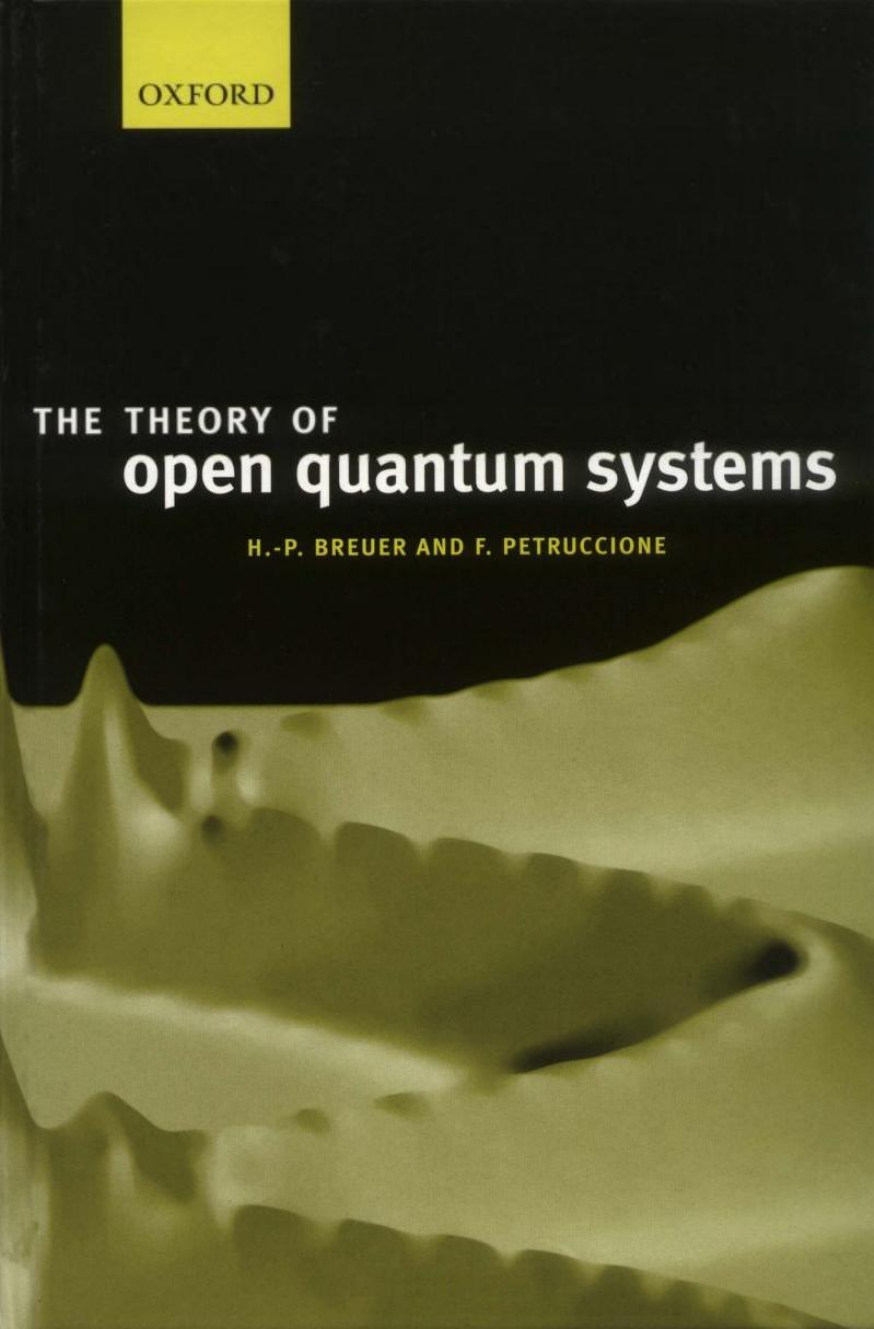
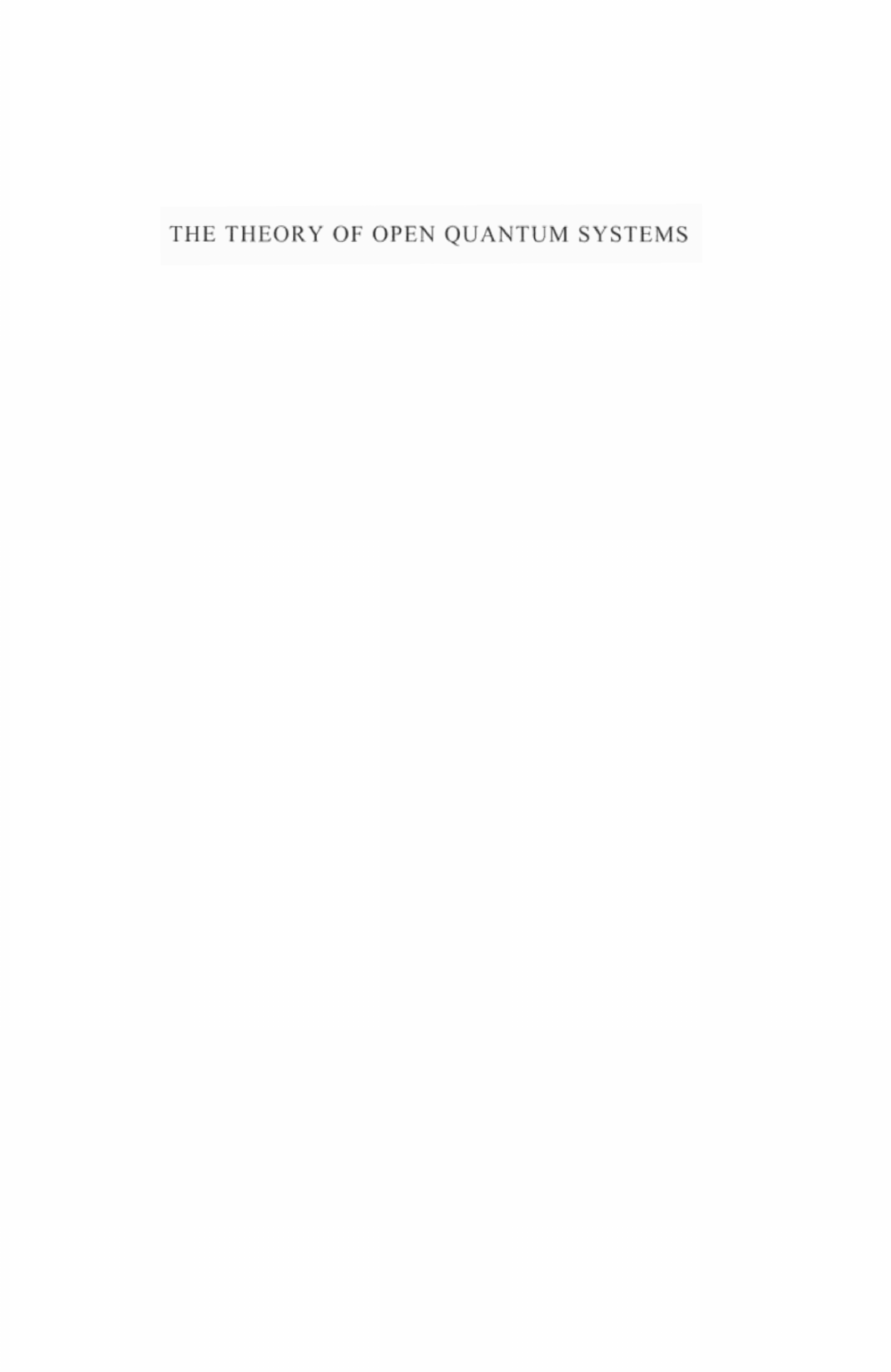
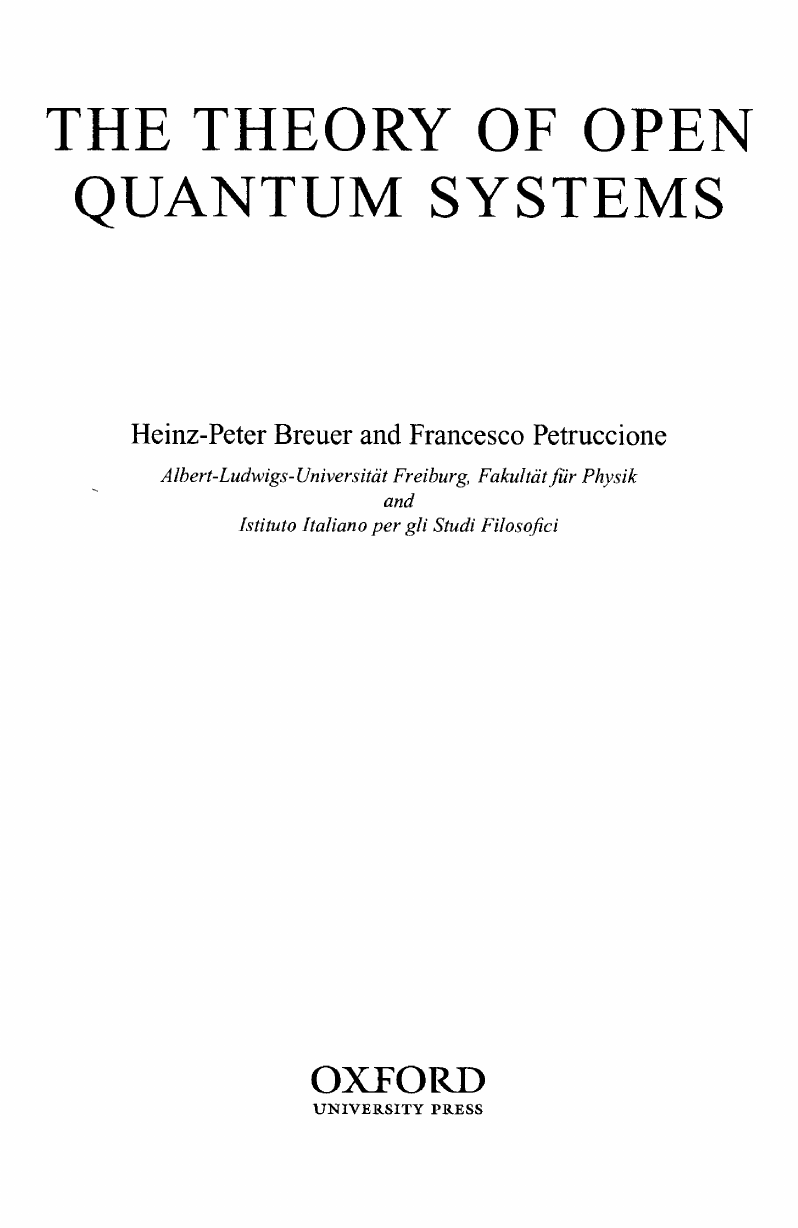
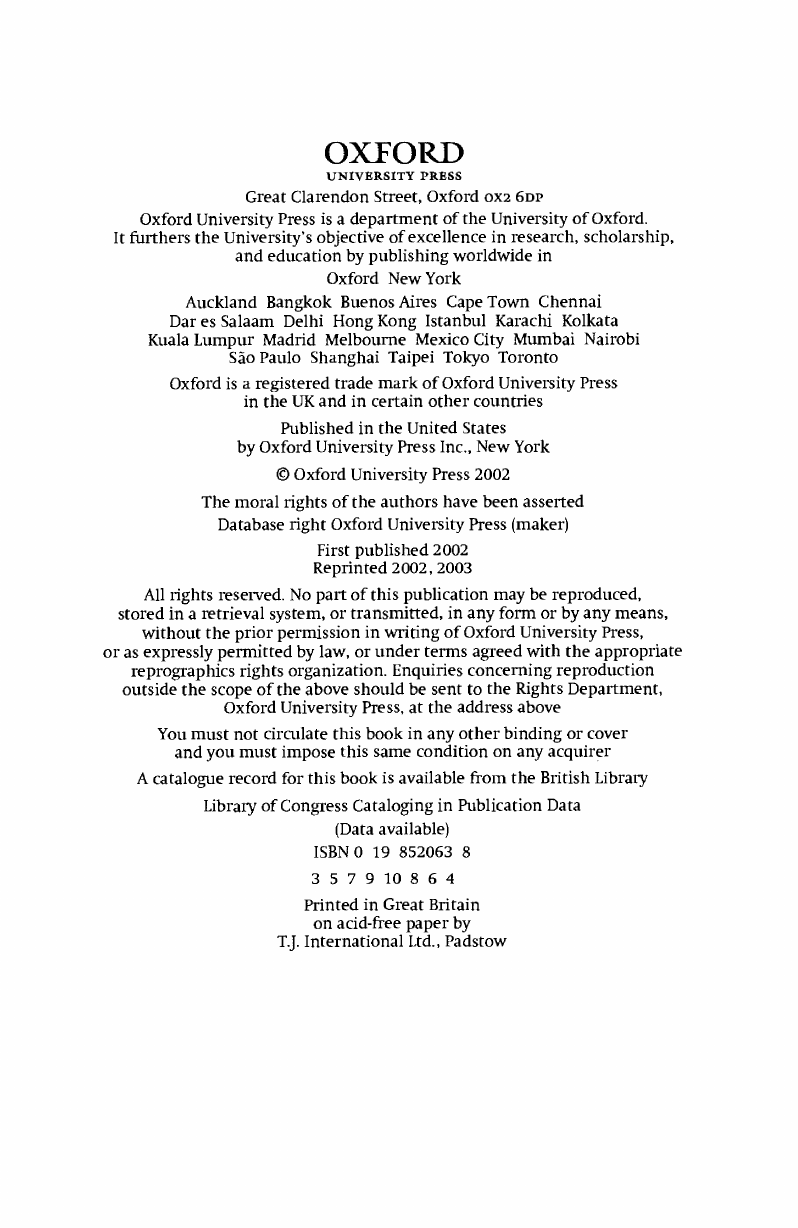

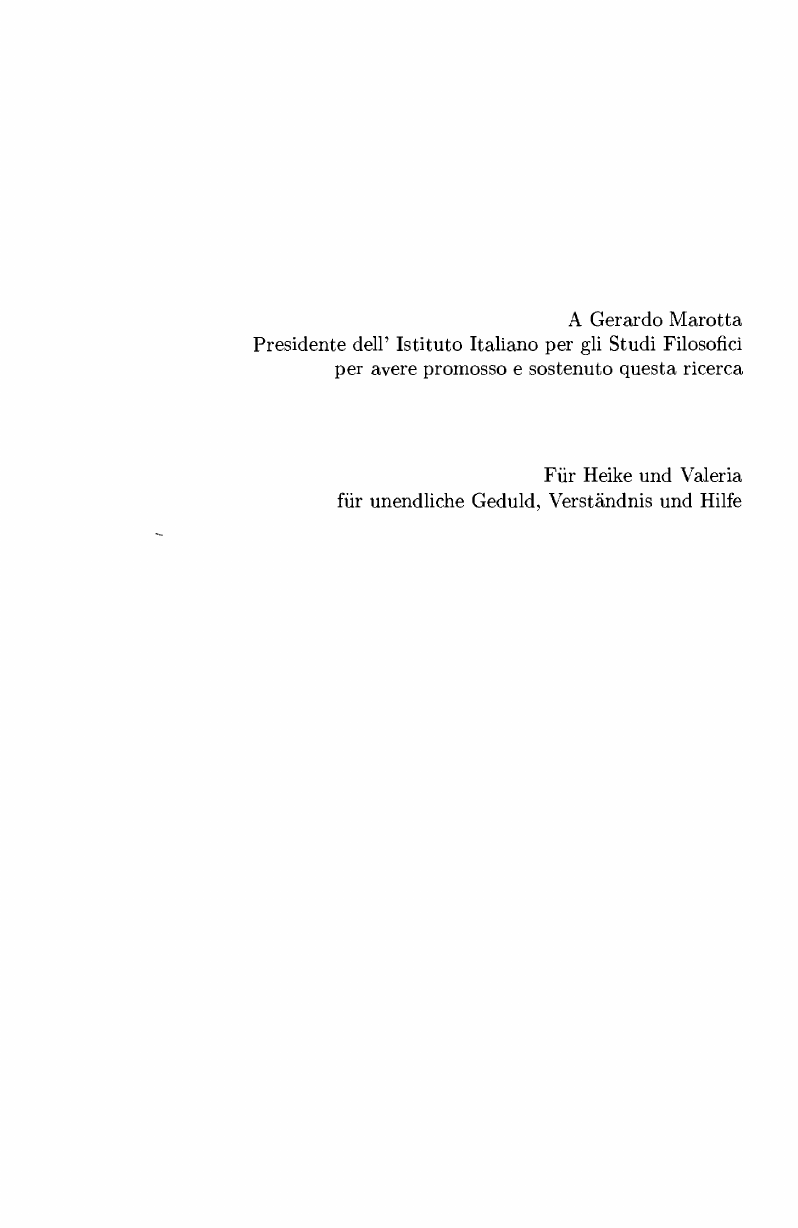










 2023年江西萍乡中考道德与法治真题及答案.doc
2023年江西萍乡中考道德与法治真题及答案.doc 2012年重庆南川中考生物真题及答案.doc
2012年重庆南川中考生物真题及答案.doc 2013年江西师范大学地理学综合及文艺理论基础考研真题.doc
2013年江西师范大学地理学综合及文艺理论基础考研真题.doc 2020年四川甘孜小升初语文真题及答案I卷.doc
2020年四川甘孜小升初语文真题及答案I卷.doc 2020年注册岩土工程师专业基础考试真题及答案.doc
2020年注册岩土工程师专业基础考试真题及答案.doc 2023-2024学年福建省厦门市九年级上学期数学月考试题及答案.doc
2023-2024学年福建省厦门市九年级上学期数学月考试题及答案.doc 2021-2022学年辽宁省沈阳市大东区九年级上学期语文期末试题及答案.doc
2021-2022学年辽宁省沈阳市大东区九年级上学期语文期末试题及答案.doc 2022-2023学年北京东城区初三第一学期物理期末试卷及答案.doc
2022-2023学年北京东城区初三第一学期物理期末试卷及答案.doc 2018上半年江西教师资格初中地理学科知识与教学能力真题及答案.doc
2018上半年江西教师资格初中地理学科知识与教学能力真题及答案.doc 2012年河北国家公务员申论考试真题及答案-省级.doc
2012年河北国家公务员申论考试真题及答案-省级.doc 2020-2021学年江苏省扬州市江都区邵樊片九年级上学期数学第一次质量检测试题及答案.doc
2020-2021学年江苏省扬州市江都区邵樊片九年级上学期数学第一次质量检测试题及答案.doc 2022下半年黑龙江教师资格证中学综合素质真题及答案.doc
2022下半年黑龙江教师资格证中学综合素质真题及答案.doc